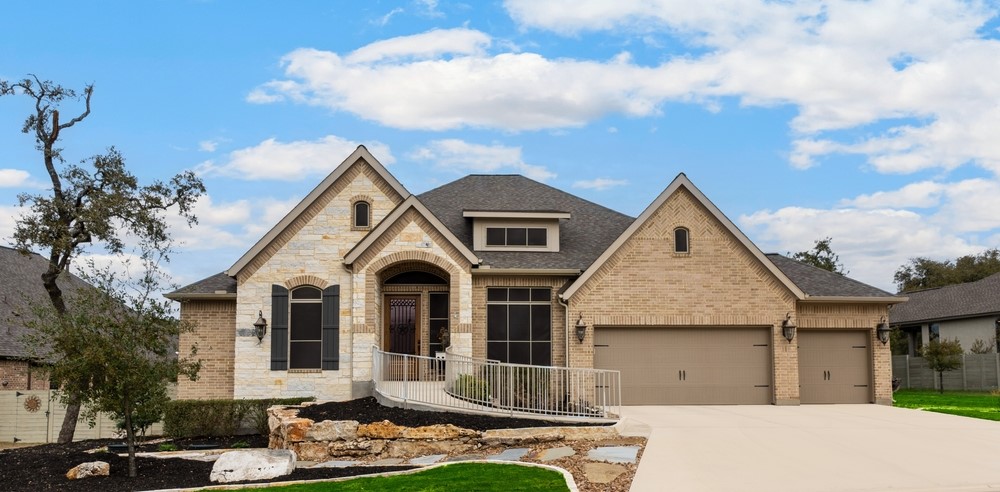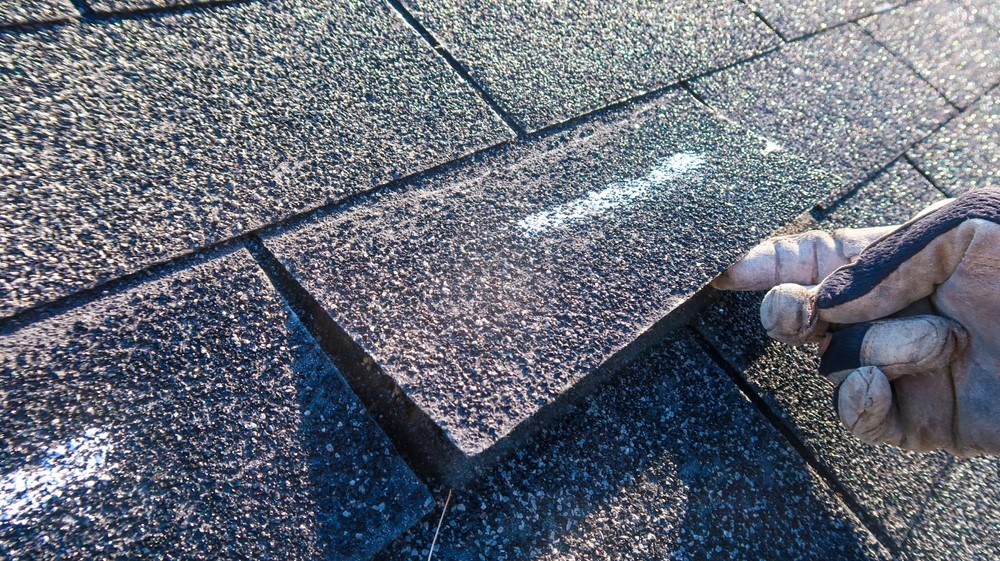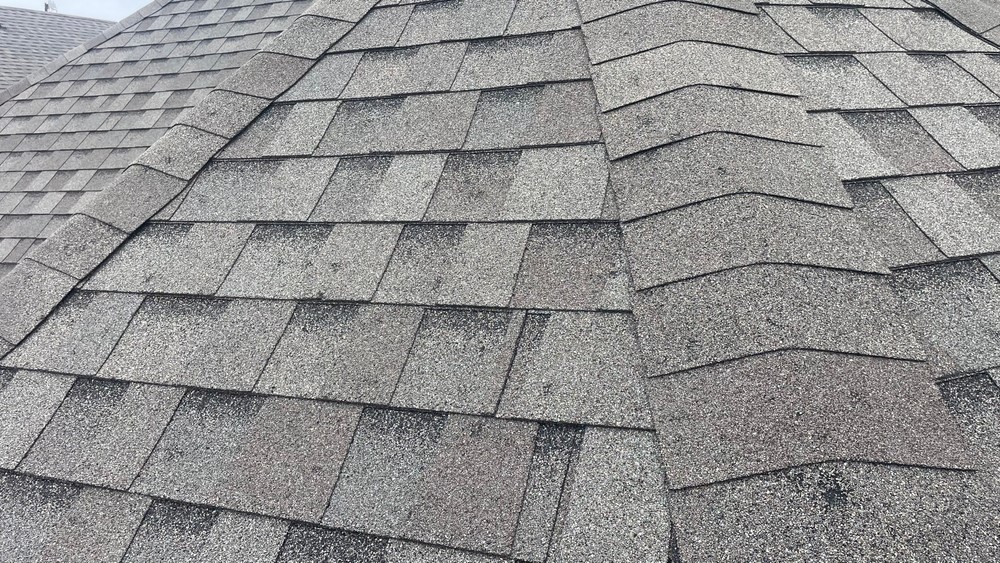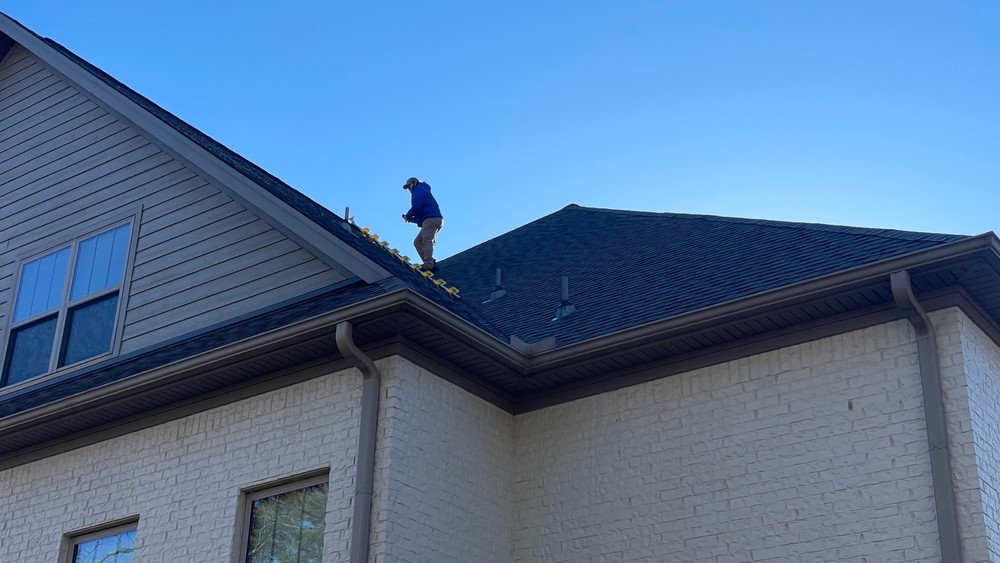Texas isn’t accustomed to seeing blizzards. We shut down work and school at the sight of a few flurries. But even in Texas, sudden temperature changes can cause issues with your roof. If we know one thing about Texas weather, we know it’s unpredictable. Our heaters are on this week, and the AC is on the next. In fact, one of the most extreme temperature drops in history happened in Amarillo on December 12, 1919. At noon, you may have been enjoying a nice picnic in the mild 67-degree sunshine. A northern wind blew through and took the once-mild afternoon down to 23 degrees Fahrenheit! By 7 pm, it was only one degree above zero. While we don’t expect to break Amarillo’s record, it’s a good idea to have your roof checked before colder weather hits this winter. These are some of the potential problems that your roof may go through this winter if left unchecked. 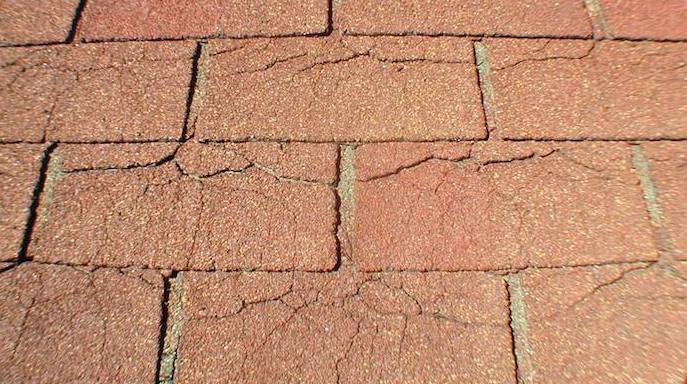 Low-quality asphalt shingles are especially prone to cracking due to temperature drops as they near the end of their lifespan. Leaks bring damage to your attic and the items stored in it. It may also damage the paint on nearby walls, and make its way to lights and fans in the ceiling. Plus, where there’s moisture over a prolonged period of time, there will also be mold and mildew. As a porous material, your attic’s insulation is especially prone to mold with chronic water intrusion soaking into it. The older your roof is, the more risk you take on during the colder winter months. As materials age, they lose their elasticity: their ability to expand and contract without cracking. Cracks in your roof due to colder weather can “snowball” (pun intended) into much larger issues.
Low-quality asphalt shingles are especially prone to cracking due to temperature drops as they near the end of their lifespan. Leaks bring damage to your attic and the items stored in it. It may also damage the paint on nearby walls, and make its way to lights and fans in the ceiling. Plus, where there’s moisture over a prolonged period of time, there will also be mold and mildew. As a porous material, your attic’s insulation is especially prone to mold with chronic water intrusion soaking into it. The older your roof is, the more risk you take on during the colder winter months. As materials age, they lose their elasticity: their ability to expand and contract without cracking. Cracks in your roof due to colder weather can “snowball” (pun intended) into much larger issues.  This is an example of severely damaged chimney flashing. Image credit: KARNAK If you have a metal roof, your contractor may inspect for missing fasteners, the condition of washers, and the penetration sealant’s condition. Every horizontal-to-vertical change in slope will be checked for inconsistencies.
This is an example of severely damaged chimney flashing. Image credit: KARNAK If you have a metal roof, your contractor may inspect for missing fasteners, the condition of washers, and the penetration sealant’s condition. Every horizontal-to-vertical change in slope will be checked for inconsistencies.  Sudden transitions in pitch (the angles or shape of your roof) may loosen the flashing. Image Credit: IKO
Sudden transitions in pitch (the angles or shape of your roof) may loosen the flashing. Image Credit: IKO
Cracks and Leaks by Thermal Shock
Warmer temperatures cause the roof to expand, or get bigger. Colder temperatures cause the roof to contract, or get smaller. As your roof contracts and expands during a temperature flux, seams may open and cracks may form. In the roofing world, we call this “thermal shock”. When ice enters these crevices, it then opens them further. As it melts and refreezes, it prys cracks open larger. The end result is a leak into your attic. Low-quality asphalt shingles are especially prone to cracking due to temperature drops as they near the end of their lifespan. Leaks bring damage to your attic and the items stored in it. It may also damage the paint on nearby walls, and make its way to lights and fans in the ceiling. Plus, where there’s moisture over a prolonged period of time, there will also be mold and mildew. As a porous material, your attic’s insulation is especially prone to mold with chronic water intrusion soaking into it. The older your roof is, the more risk you take on during the colder winter months. As materials age, they lose their elasticity: their ability to expand and contract without cracking. Cracks in your roof due to colder weather can “snowball” (pun intended) into much larger issues.
Low-quality asphalt shingles are especially prone to cracking due to temperature drops as they near the end of their lifespan. Leaks bring damage to your attic and the items stored in it. It may also damage the paint on nearby walls, and make its way to lights and fans in the ceiling. Plus, where there’s moisture over a prolonged period of time, there will also be mold and mildew. As a porous material, your attic’s insulation is especially prone to mold with chronic water intrusion soaking into it. The older your roof is, the more risk you take on during the colder winter months. As materials age, they lose their elasticity: their ability to expand and contract without cracking. Cracks in your roof due to colder weather can “snowball” (pun intended) into much larger issues. What Your Roofer Should Look For This Winter
What your roofing contractor inspects will partly depend on your type of roofing material. But they’re definitely looking at “transition areas” where shingles or panels meet at a significant angle, or around things like chimneys, pitch pans, and parapet walls. These areas are more prone to small fractures. This is an example of severely damaged chimney flashing. Image credit: KARNAK If you have a metal roof, your contractor may inspect for missing fasteners, the condition of washers, and the penetration sealant’s condition. Every horizontal-to-vertical change in slope will be checked for inconsistencies.
This is an example of severely damaged chimney flashing. Image credit: KARNAK If you have a metal roof, your contractor may inspect for missing fasteners, the condition of washers, and the penetration sealant’s condition. Every horizontal-to-vertical change in slope will be checked for inconsistencies.  Sudden transitions in pitch (the angles or shape of your roof) may loosen the flashing. Image Credit: IKO
Sudden transitions in pitch (the angles or shape of your roof) may loosen the flashing. Image Credit: IKO Be Proactive This Winter - Get Your Roof Checked!
At a minimum, every homeowner should have their roof checked before winter and before summer. Thermal shock can threaten roofs of any material, especially as they age - even in a Texas winter. RoofCrafters has served the central Texas area since 1981. Home and business owners trust us to replace and maintain their roofs with the highest quality materials and craftsmanship. Be proactive this winter before you discover a problem. Get in touch with us today, and let’s schedule a time to check out your roof!Subscribe to RoofCrafters Inc's Blog



